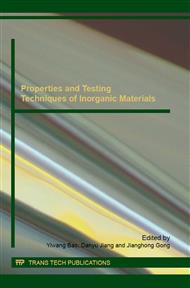p.297
p.301
p.306
p.311
p.315
p.323
p.327
p.331
p.335
A Study of Environmental Impact Assessment on Intrinsic Energy and Full Life Cycle of Typical Energy-Saving Exterior Windows
Abstract:
This paper established a set of localized intrinsic energy and full life-cycle environmental impacts of database for exterior windows. It deeply surveys and analyzes the non-renewable resource consumption (ADP), non-renewable energy consumption (PED), influence of greenhouse effect (GWP), acidification effect (AP), eutrophication (EP) and inhalable inorganics (RI) closely related national energy conservation policy objectives. These lay the foundation for intrinsic energy of buildings. Meanwhile, It discusses contributions of various exterior windows for energy consumption of buildings, which is conducive to using of green building materials and realization of green buildings.
Info:
Periodical:
Pages:
315-322
Citation:
Online since:
February 2016
Authors:
Price:
Сopyright:
© 2016 Trans Tech Publications Ltd. All Rights Reserved
Share:
Citation:


